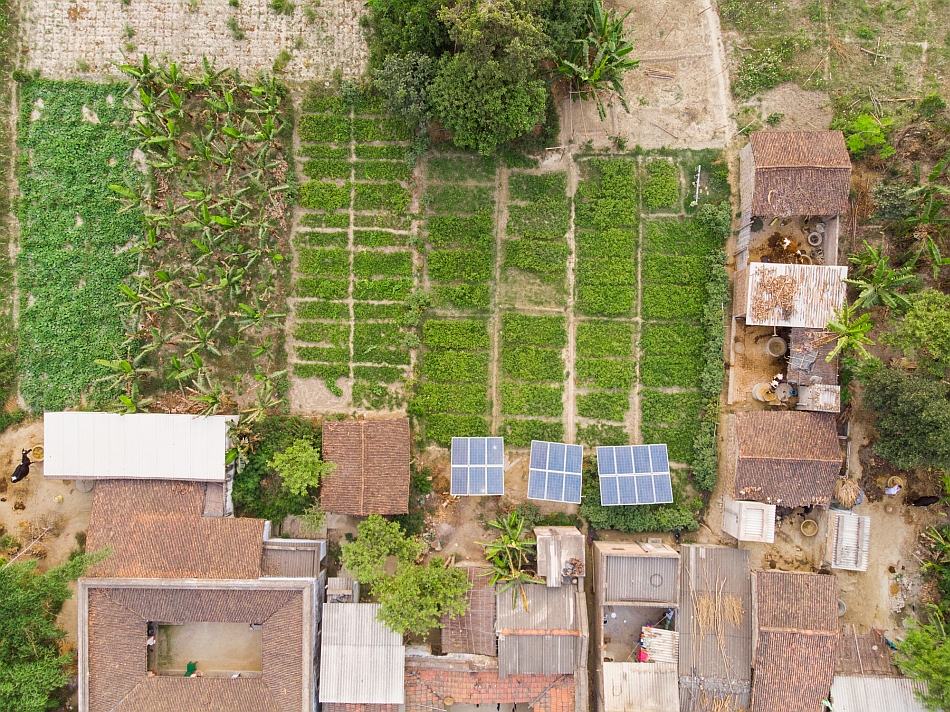
Policies that helped India to become self-sufficient and keep food prices affordable in the 1960s and 70s are today contributing to rapid groundwater depletion, putting electricity utilities in financial distress, and keeping farmers locked in to growing rice and wheat, instead of more nutritious coarse cereals. These are among the findings of a new review paper Sustainable Groundwater Management in India Needs a Water-Energy-Food Nexus Approach published by the International Water Management Institute (IWMI).
The author, IWMI Principal Researcher Aditi Mukerji, argues that outdated policies around water, energy and food have contributed to the current unsustainable trends in water and energy sector and that reforms in water energy and food sectors are needed to better manage unsustainable groundwater use.
During the ‘Green Revolution’ of the 1960s and 70s, India staved off famine by encouraging farmers to adopt modern crop varieties and fertilizers, and also to change their irrigation practices. It drove this behavior change by guaranteeing procurement of crops such as water-intensive rice and wheat, and subsidizing electricity so it was cheaper for farmers to pump water for irrigation. As a result, food production increased dramatically, and rural poverty declined.
The overall objective of the Green Revolution was to increase food grain production and keep food prices low and affordable for India’s large population. For this, several food, energy and water policies were introduced. On the food policy side, there would be guaranteed minimum prices to farmers for growing rice and wheat, and support the distribution of subsidized food. On the energy front, rapid rural electrification and subsidized flat electricity tariffs provided incentives to farmers to pump as much water as they needed for a fixed fee. The high returns promised from growing new wheat and rice varieties – at a time when public tube-well and canal irrigation schemes were failing – prompted huge private investment in pumps for accessing groundwater.
While the policy shifts delivered the desired food production gains, they set India on a path to poorer nutrition and groundwater depletion. The guaranteed price for wheat and rice meant farmers stopped growing more nutritious crops, such as sorghum and millet. And as wheat and rice require considerable volumes of water, farmers also irrigated more, aided by the cheaper cost of pumping facilitated by the electricity subsidies. The flat-fee tariffs meant that farmers had less incentive to conserve water. Lack of energy accounting also pushed electricity utilities on to a path of fiscal losses.
Today, the impacts of these changes are clear. Almost 20 percent of India’s groundwater blocks have witnessed over-exploitation, further undermining India’s future food security. Electricity utilities have experienced financial difficulties, resulting in the poor upkeep of electricity infrastructure. Even though India is food self-sufficient, malnutrition is on the rise. The latest National Family Health Survey shows that hunger and malnutrition both increased in the year 2019–20 relative to 2015–16.
One reason the policies have largely remained in place is because powerful lobbies have sought to maintain the status quo. For example, the introduction of Green Revolution food policies led farmers to join forces to bargain for higher minimum grain prices and subsidies, and to keep electricity tariffs perpetually low. “The policies have stuck even in places when they should have changed,” explains Mukherji. “It has led to a situation where the policies are not in sync with the agricultural realities, where we are producing food at the cost of our environment – especially groundwater.”
In the new paper, published in the journal Applied Economic Perspectives and Policy, Mukherji considers strategies that could help reverse the trends of worsening nutrition and groundwater depletion. The first is to incentivize farmers to grow alternative crops. There is evidence that incorporating ‘nutri-cereals’ in midday meals leads to better nutritional and cognitive outcomes for children. And studies show that it is possible to reduce irrigation demand and cut greenhouse gas emissions by replacing rice with cereal crops, such as maize, finger millet, pearl millet or sorghum.
Presently, north-western states – including Punjab and Haryana – have overexploited groundwater resources, which will make it difficult for farmers there to adapt to climate change. So, a second strategy proposed by Mukherji is for a renewed Green Revolution thrust in eastern India, which has abundant water resources. It makes sense to expand wheat and rice production in eastern India, she writes, while water-scarce north-western states focus on growing less-thirsty nutri-cereal crops.
Some existing initiatives show that future food, energy and water policies need to be tailored to the specific conditions in each region. The government of Punjab was able to significantly reduce groundwater pumping by postponing paddy planting from mid-May to mid-June, as this shift enabled farmers to use monsoon rains. Solar irrigation, meanwhile, has potential to reduce electricity use. However, policies must ensure it does not lead to over-exploitation of groundwater as has happened in Rajasthan. In a pilot solar irrigation project in Dhundi, Gujarat, IWMI scientists showed farmers could be encouraged to conserve water if they were paid for surplus energy.
“Going forward, it is important that our agriculture and electricity policies are geared towards the condition of groundwater resources,” says Mukherji. “We currently have a situation where in some places that don’t have much groundwater, farmers get electricity for free, while in places that are flush with groundwater, farmers either don’t have electricity so they have to use expensive diesel to pump water or if they have electricity it’s costly – so there is a mismatch in policies. Generally, we need more awareness of the interconnectedness of the food, energy and water sectors.”

